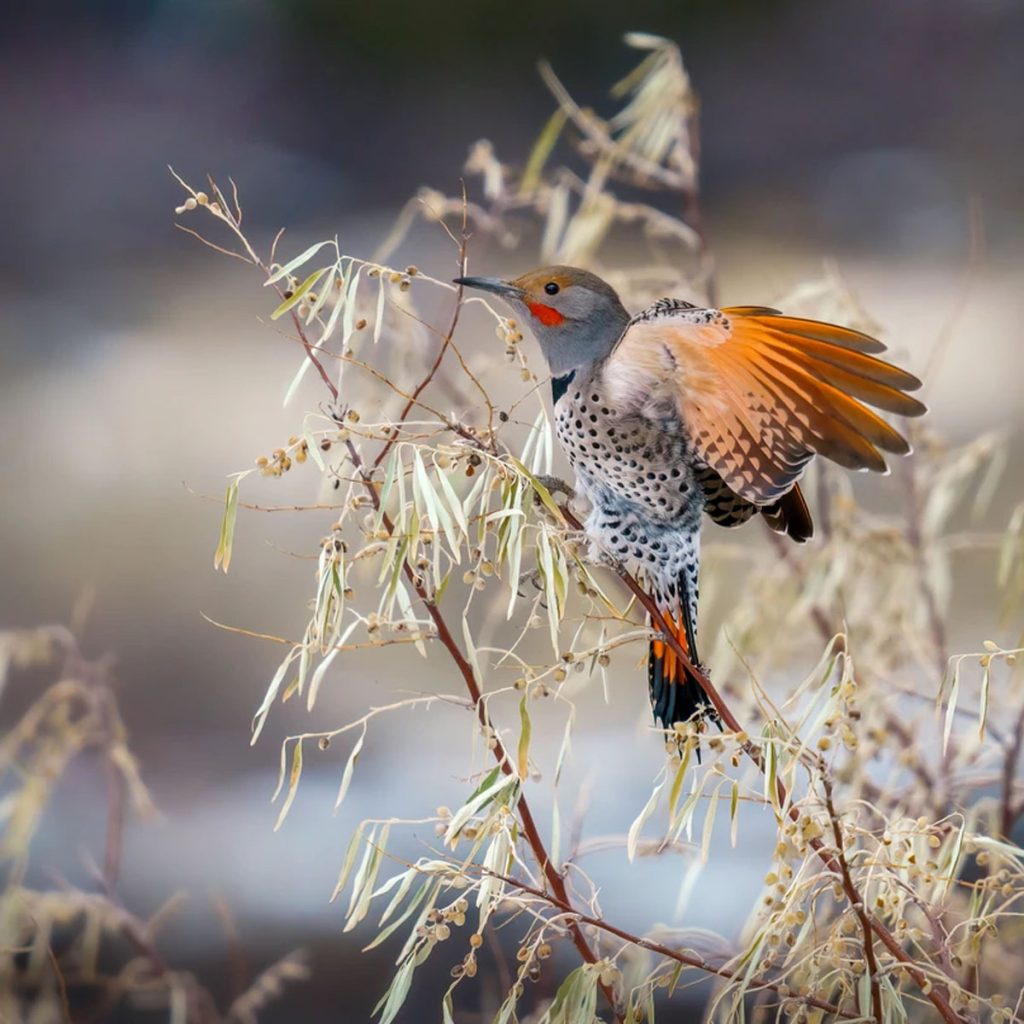
Seeing a northern flicker in flight is like watching a painted canvas in motion—the underside of its wings are a bright pastel orange at the quill that fade to a darker hue at the tips, and the black scallop at the top of its breast crowns dozens of black polka dots leading to fire orange tail feathers tipped in black like smoldering flames. From Alaska to Nicaragua, as the most widespread woodpecker in North America, people can see this bright and beautiful bird.
Calling the northern flicker a woodpecker is a bit of a misnomer, however. They do very little pecking of wood, instead foraging for their food in the dirt. The staple of a flicker’s diet is ants, and this is where their tongue (the longest among North American birds) comes in handy. Capable of extending two inches past the tip of the flicker’s beak and coated in a sticky saliva, its tongue is the perfect tool for probing ant nests. Ants are more than just food, they also help northern flickers keep their feathers clean and free of parasites. In a behavior seen in other birds like the grackle called “anting,” the bird will lie down near an ant nest and allow itself to become covered in ants. The ants in turn secrete formic acid, a simple acid with just enough sting to repel lice and other pests from the bird’s feathers.
How the northern flicker got its name is a mystery. Some speculate it references the “wicka wicka wicka” sound of its call, others say the flicking motion of its tongue earned the name. What is known is that there were once a total of 124 regional names for the northern flicker. A 1900 monograph about the northern flicker by ornithologist Frank L. Burns was scanned and digitized, thanks to our own University of New Mexico, and recounts such monikers as “yellowhammer,” “cotton-rump,” and “harry-wicket.”
When mating season approaches, two males will vie for a female’s attention in a mating display with beaks pointed upwards. The males begin to move their heads as though they are fencing with their beaks, all the while showing off their plumage by flapping their wings, spreading their tail-feathers, and making their “wicka wicka” call. This goes on for a number of hours in brief intervals until one male simply gives up and flies away. The resulting male-female pair will mate for the breeding season and share responsibility for incubating the egg clutch for about two weeks.
Nests are made by the male in decaying wood or an abandoned (and then refurbished) nest, either from another flicker or birds like the belted kingfisher or sand martins. Once their territory is claimed, a flicker will make as much noise as possible to alert surrounding birds of its claim. While this usually amounts to drumming on tree bark with their beak, flickers have been observed banging on pieces of metal to create even more noise.
Unfortunately this beautiful bird has been in decline, losing about one percent of its population each year for the last 50 years. The primary causes are thought to be territory competition from invasive European starlings, the removal of dead and dying trees, and the widespread use of pesticides that reduce their available food. The good news is there are still 12 million flickers out there and they can be found all around the Enchanted Circle. Your best bet for attracting them to your yard is to put up a large suet feeder during the winter and dried berries during the summer. Here’s hoping you get to see one soon, as they truly are a sight to behold.
Author
-

Bryce Flanagan moved from Sacramento, CA to Taos County in 2016, and has lived in Questa for two years. He's passionate about the unique and beautiful wildlife of our state and is a regular contributor to the Questa Del Rio News.
View all posts


